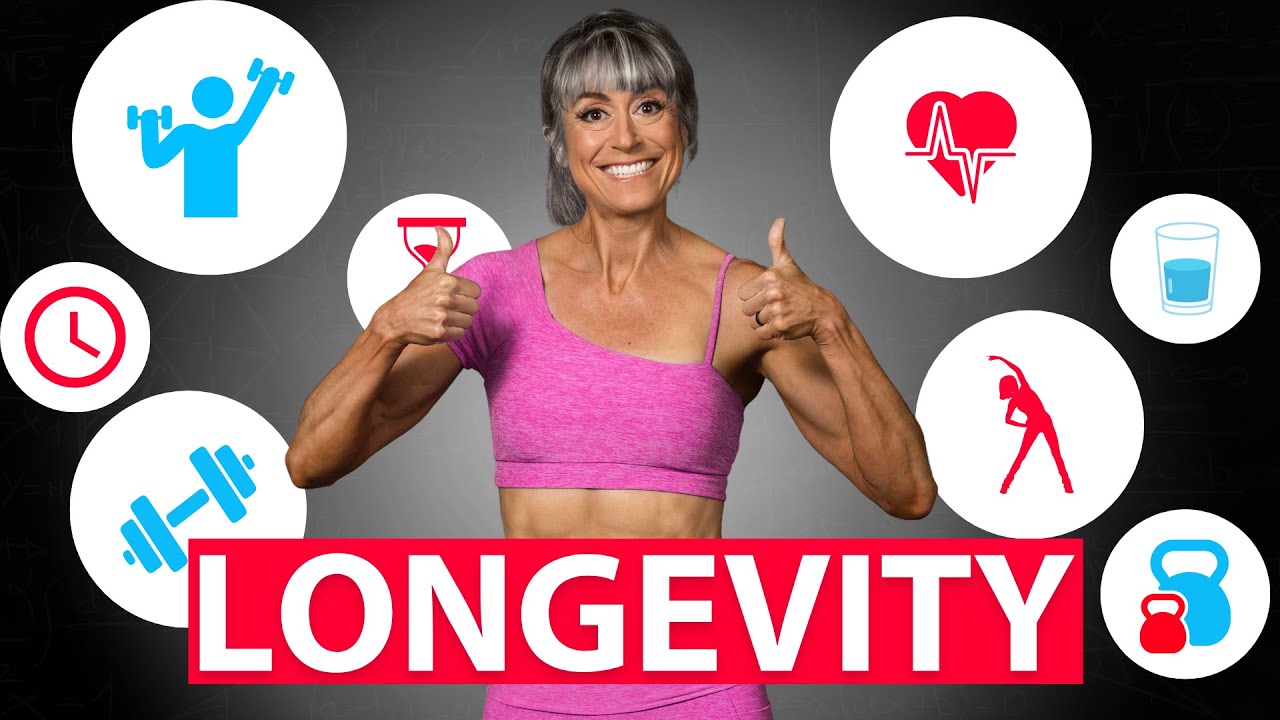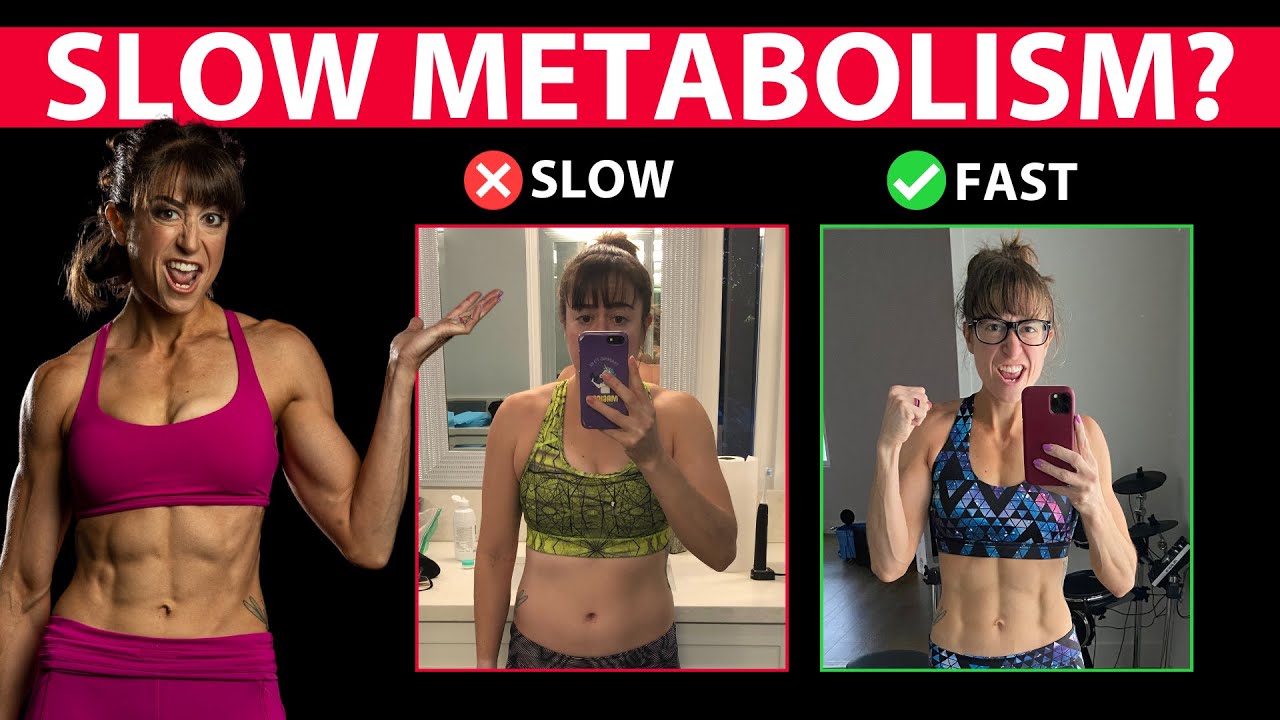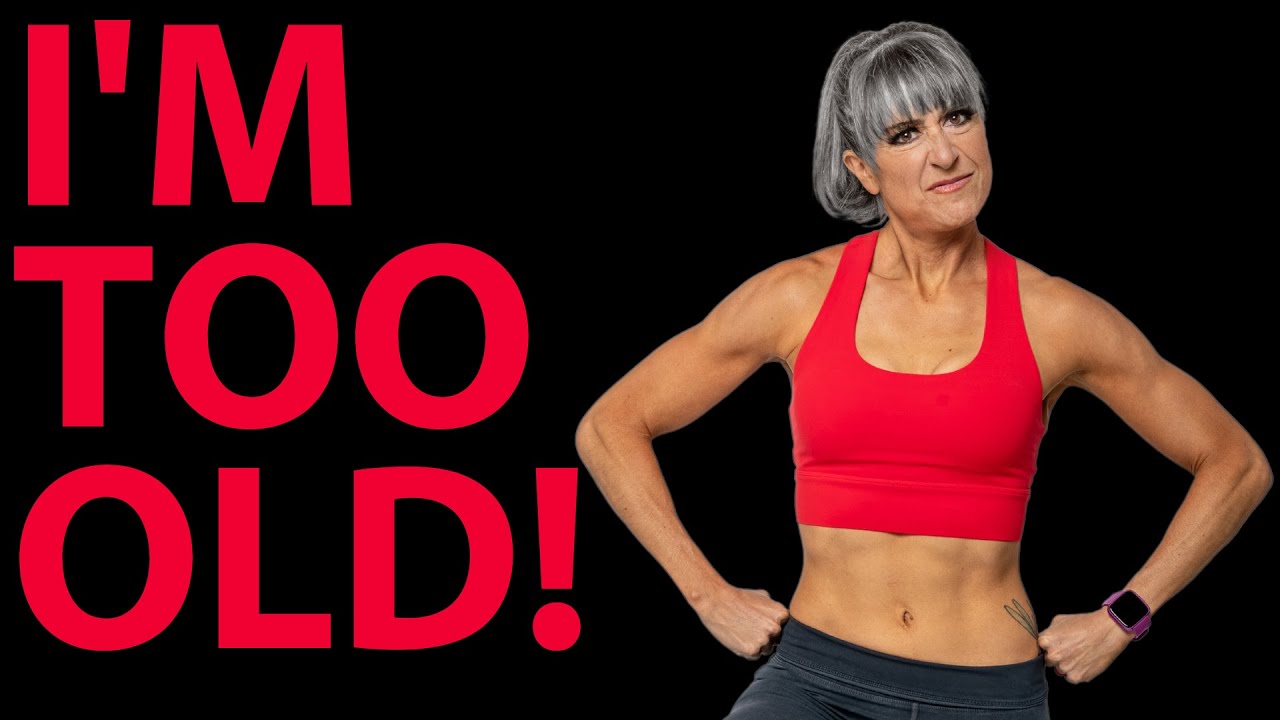
Exercises For Longevity
If you’re looking for exercises to not only help you live a longer life but a healthier one, then this video is exactly what you need.
In this video I am going to share with you why explosive exercises are key to include, 5 moves to improve your functional strength and mobility and tell you how you can strengthen this key predictor of longevity!
If we want to live longer, we need to be strong, mobile and able to react quickly.
That means including not only the 5 strength moves I’ll share but also explosive exercises.
They help improve your functional full body strength and coordination.
And the 5th move in this video will help you strengthen these key muscles to improve this commonly ignored “secret” to living longer!
So let’s talk about being a freaking lean and strong rockstar till your final day on this planet.
Part of how we need to train and the moves we need to include come back to one basic principle…
Use it or lose it.
We need to train the movement patterns we want to maintain until the end.
But not every move has to be an exact replica of an everyday activity.
Being functionally strong means being able to control our joints through a full range of motion and react quickly, recruiting the correct muscles at the correct times.
That’s why we need to include a diversity of moves, tempos and even types of resistances while focusing on strengthening through the fullest range of motion we can.
It’s why it is key we not only slow down the tempo of some movements but actually even SPEED UP the tempo at times!
So…Why Explosive Moves Are Key:
As we get older, our risk for falls and factures increases.
And part of this is due to our inability to react quickly when we trip or stumble.
We need to maintain our mind-body connection so we can recruit the correct muscles quickly to respond and help us avoid injury.
This is why including some explosive and even jumping movements is so key.
By performing these moves that require speed, power and coordination, we can keep that mind-body connection strong so we can react quickly in everyday life!
These moves that are fast-paced and require more muscles to work together at once quickly, are a great way to improve our coordination in a controlled environment.
While I know explosive, jumping and coordination intensive moves can feel awkward and frustrating even at times, they are essential to include.
If you can’t do super high impact exercises due to injury, consider things like the agility ladder, med ball slams and throws, kettlebell swings or even other movements where you move quickly as if you were going to leave the ground like bodyweight squats coming up onto your toes!
But don’t avoid the moves that challenge your MIND and not just your body to respond.
This ability to recruit muscles quickly builds strength as well!
We have to remember that the more we use muscles, go through that full range of motion and really challenge ourselves, the more strength, mobility and power we will maintain!
Now what are 5 strength moves you should include along with that explosive power and coordination work?
Move #1: Step Ups
Step ups are not only a movement pattern many of us use every day, stepping up onto a curb or going up stairs, but they are a key compound move to include for functional leg strength and to keep our hips and knees healthy.
They are also a unilateral or one sided exercise, which makes them extra valuable as they can make sure we don’t perpetuate imbalances or overuse one side due to weakness or previous injury.
Now if you’re thinking, “Great….Step ups hurt my knees.”
Don’t stress.
While they can be blamed for knee pain, learning to control this movement pattern can actually help us AVOID knee pain as we get older…
Because if we can’t control knee flexion, we’re going to struggle sitting down to the toilet or going up stairs!
We need to learn how to correctly load our glutes and prevent our knees from caving in as we step up.
When you do the step up, think about your foot as a tripod, two points in the ball of the foot, one in the heel. Firmly press through all three points to move to standing on the box.
Focus on feeling that glute as you drive up to keep the knee in line and avoid it collapsing in.
If you find you struggle due to even previous injury, not only can you start with a lower box, but I’m going to share a video in the description that teaches you to do a top down version of this movement called the step down.
This variation is a bit more of a hip hinge to make it glute dominant, which may help you to start!
Move #2: Single Arm Anti-Rotational Row
The Single Arm Anti-Rotational Row is another great compound unilateral movement to include to target your back.
And it’s key we include lots of back exercises in our routines as we get older to not only avoid neck, shoulder and upper back aches and pains but also avoid that “old age” posture we can see developing.
Most of us spend far too much time hunched over our technology. And the longer we’ve spent at a desk job, the more this posture adds up with age.
So we want to include back exercises to help reverse this posture.
This row not only addresses that back strength but, because it works one side at a time, will help you correct any imbalances between sides to avoid injury.
And the anti-rotational aspect of this movement, you fighting the urge to let your body rotate open as you row, is also a great way to improve your core strength and stability.
Anti-rotational moves are essential for us as we get older as they help us avoid lower back and hip pain by improving our core stability!
So as you do this move, really make sure to keep your shoulders un-shrugged to engage your back, focusing on your shoulder blade moving toward your spine and then pretend as if you’re rowing up with both arms to get that core to work to avoid rotation!
You’ll feel your core working to avoid your hip on the side not rowing from dropping open toward the ground.
While I love doing this move from a suspension trainer, you can do it off a bar as well!
Move #3: Single Leg Deadlift
Lower back aches and pains can seemingly add up more and more as we get older. Picking something up off the ground can feel like a risky activity.
But that’s because we stop training this essential movement pattern – the hip hinge.
Deadlifts are so often demonized as we get older, but it is key we learn how to hinge correctly to use our glutes and hamstrings so we don’t overload our back when picking up boxes or lifting things off the ground!
Just like it is key we train that knee flexion during moves like step ups to keep our knees healthy.
That’s why I love the single leg deadlift.
This variation of the hip hinge not only helps you strengthen those glutes and hamstrings to protect your lower back, but also works to improve your balance and core stability.
And better balanced has been linked with longevity!
When you do this move, make sure to truly sit back as you hinge over. You aren’t just leaning forward. You’re thinking about pushing your butt back to touch the wall behind you as you then bow over.
Do not just round and reach forward or try to squat and bend your knee to sink lower!
If you struggle though with the full single leg variation and balance as it is a tough unilateral move, start with a slider or even an 80/20 variation.
And in the video description I’ll share a video with an in depth tutorial on form and modifications.
Move #4: Rotational Chest Press
You want to include pulling, pushing, squatting and hinging over the course of your workout routines.
And you want to include anti-rotational moves, like the row variation I mentioned, as well as rotational exercises to strengthen your core.
While anti-rotational moves help you avoid unwanted rotation of your spine to protect it, rotational moves help you learn to power rotation properly so you don’t overload your lower back.
And with this press variation, you’ll not only strengthen your core but also your chest, shoulders and triceps.
It’s also a unilateral move to help you stay mobile and strong while avoiding and correcting imbalances.
To do this move, you will want to use a staggered stance, with the foot back on the side that is pressing.
And while you are rotating open and then away, do not make this a bigger move than you need, letting your hand drift back and away from your chest as you rotate toward the anchor point of the band or cable.
You also don’t want to end up just rotating through your lower back.
Make sure you feel your obliques really working as you twist.
And don’t shrug your shoulder.
While you can reach out a bit at the end to work that serratus anterior, which is key to keeping your shoulders healthy, you don’t want to round forward.
Focus on that press coming off of the rotation!
This can even be a great accessory move if you are working to improve your push ups!
Move #5: Unilateral Farmer’s Carry
Now this move is one of the most essential and functional movements everyone should be doing at every age to live a long, healthy life.
Carries are such a key move to include as they work our grip strength and even our entire body.
And being able to carry heavy things is truly key if we want to be fully independent as we age!
With carries, you can include so many different variations to target a variety of muscles based on your needs and goals.
You can do bilateral carries, carrying weights on both sides to use heavier loads and challenge your legs even more.
Or you can do an overhead carry for more shoulder work.
You can even do a unilateral variation of any carry to work on that anti-rotational core strength.
When you do the unilateral carry, walk as if you are carrying a weight on both sides and avoid leaning! This is what gets you that anti-rotational or anti-flexion benefit and works those obliques to stabilize.
No matter which carry you include though, a carry variation is key to include not only because of the full body benefits and because we carry things in every day life but because of how important GRIP STRENGTH is to longevity.
Cori Hack: Grip Strength
Grip strength is a key indicator of life span and is believed to be an indispensable biomarker for older adults.
A stronger grip has been linked with better health!
Studies have shown that “grip strength is largely consistent as an explanation of concurrent overall strength, upper limb function, bone mineral density, fractures, falls, malnutrition, cognitive impairment, depression, sleep problems, diabetes, multimorbidity, and quality of life.
There is also evidence linking grip strength and all-cause and disease-specific mortality, future function, bone mineral density, fractures, cognition and depression, and problems associated with hospitalization.”
So do not ignore the importance of strengthening your grip if you want to live a long and healthy life!
Now that doesn’t mean you have to go out and buy a ton of fancy specialized tools to strengthen your grip.
Moves like carries are essential to include, but even the other moves listed here will all promote muscle growth and even grip strength.
The rows will challenge your grip as will the deadlifts and step ups, especially as you add loads.
So don’t stress grip isolation moves but exercises that force you to carry loads while also helping you build functional full body strength!
Use these 5 moves to build lean muscle and improve your grip strength so you can live a long, healthy and independent life!
And don’t be afraid to challenge yourself with moves that test your coordination and work not only your body but brain as well! Being able to react quickly is key.
For more tips to use these moves, don’t forget to check the video description.
And remember, mobility work is also key as we get older. Check out my Flexibility Secrets To Make You Feel Younger next!
STUDIES:
https://www.ncbi.nlm.nih.gov/pmc/articles/PMC6778477/
https://agsjournals.onlinelibrary.wiley.com/doi/10.1111/jgs.17626
OTHER LINKS:
More on Step Downs: https://redefiningstrength.com/hate-step-ups-try-this-move-instead/
Deadlift tips: https://redefiningstrength.com/the-best-deadlift-exercise-you-arent-doing/




